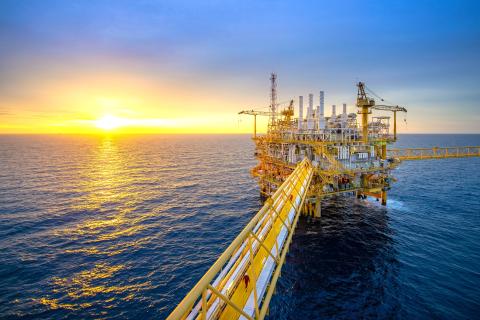
On 16 February 2011, the EITI Board agreed a new edition of the EITI Rules. The EITI Rules brings together the all the requirements for implementing the EITI. The changes in the EITI Rules - 2011 edition are the results of an extensive consultation process, and based on detailed feedback received from many EITI stakeholders.
Key changes and refinements to the EITI Rules
- The EITI Rules have been restructured. The EITI principles and criteria have not been modified, but there is a new chapter on EITI Requirements. This chapter sets out with greater clarity the requirements that implementing countries and their stakeholders have to meet in order to become EITI Compliant. The Validation Guide has also been extensively reworked and clarified, providing validators with instructions on how they should validate that the EITI requirements have been met. The document also includes standard terms of reference for validators.
- The sign-up requirements have been strengthened. Previously, prospective Candidate countries were required to meet four sign-up requirements. The Board has agreed that formation of a multi-stakeholder group (MSG) should now occur in advance of a country being granted Candidate status, and the MSG should approve the EITI workplan
- Time limit on candidature. Previously, the EITI Rules placed no restrictions on the length of candidature. The EITI Rules - 2011 Edition stipulates that Candidate status is for a finite period. Candidate countries will have 18 months to publish an EITI report and two and a half years to submit a final validation report endorsed by the MSG to the EITI Board. Countries that demonstrate meaningful progress but do not achieve compliance will have their candidacy extended for an additional 12 months. If a second validation does not verify Compliance at the end of this period, the country will be delisted. (For additional information see policy note #3).
- Regular and timely EITI Reporting. The EITI Criteria specifies the need for regular reporting. EITI Rules, 2011 Edition stipulates that implementing countries are required to produce their first EITI report within 18 months. Thereafter, implementing countries are required to produce EITI reports annually, covering data no older than the second to last complete accounting period. Countries that have not produced a report for more than two years may be suspended and delisted from the EITI. (For additional information see chapter 3, requirements 5(f)).
- Participation of Civil Society. Requirements 2, 4, 5 and 6 have been strengthened and a new policy note emphasises the centrality of the free, full, independent, active and effective participation of civil society in EITI implementation (see EITI policy note 6).
- Materiality. The EITI criteria call for “Regular publication of all material oil, gas and mining payments by companies to governments (“payments”) and all material revenues received by governments”. Imprecision and confusion relating to the definition of materiality have been a reoccurring theme in validation reports. The new edition of the rules includes several modifications to requirement 9 to clarify the MSG’s mandate to agree a definition and incorporate it into the reporting templates. (For additional information see chapter 3, requirement 9). This includes requirements relating to in-kind payments, infrastructure provision or other barter-type arrangements (see section 9(f)) and guidance on social payments (see section 9(g)).
- Reports based on audited accounts to international standards. It is a requirement that company and government reports are based on accounts audited to international standards. These requirements have been elaborated, providing further guidance to MSGs to how to work toward meeting this objective.
- Reporting requirements. Requirement 18 has been strengthened to ensure that EITI reports are “publicly accessible, comprehensive and comprehensible”. This includes a requirement that EITI reports:
- Clearly set out the multi-stakeholder group’s agreed definition of “material payments and revenues”;
- Lists and describes the revenue and benefit streams that are included in the report;
- Lists all licensed or registered companies involved in the extractive sector exploration and production, noting which companies participated in the EITI reporting process and those that did not;
- Clearly states if any companies or government entities failed to participate in the reporting process, and assesses whether this is likely to have had a material impact on the stated figures;
- Describes the steps taken by government and the multi-stakeholder group to ensure that company and government disclosures to the reconciler are based on audited accounts to international standards;
- Describes the methodology adopted by the reconciler to identify discrepancies, and any further work undertaken by the reconciler, the multi-stakeholder group or the government to explain and if necessary address any discrepancies that have been identified.
- Requirements for Compliant countries. A new requirement has been incorporated that sets out the conditions for retaining Compliant status. Compliant countries are required to publish a public report annually on the previous year’s activities, detailing progress in implementing the EITI and any recommendations from the validator. Compliant country multi-stakeholder groups are encouraged to explore innovative approaches to extending EITI implementation to increase the comprehensiveness of EITI reporting and public understanding of revenues and encourage high standards of transparency and accountability in public life, government operations and in business.
Transitional arrangements
It is important to note that the EITI Board has yet to agree the transitional arrangements for how these rules will come into force. The transition will not be straight-forward. While it is desirable that the new rules come into effect as soon as possible, implementing countries will also need time to adjust as there are EITI Reports, Validations and corrective actions currently being undertaken based on the previous version. The EITI Board is expected to agree the transitional arrangements shortly.
Background
A central feature of the EITI standard is that implementing countries are required to undergo an independent review of their EITI process. This independent review, known as EITI Validation, had to be completed within two years of becoming accepted as an EITI Candidate country. By the end of 2010, 20 countries had completed EITI Validation and the EITI Rules, including the Validation Guide had proved to be workable and robust. However, Validation has proven challenging on several fronts. The majority of implementing countries were not able to complete Validation within the agreed 2 year deadline. Some of the EITI requirements were insufficiently clear. As the EITI Board and International Secretariat learned from experiences on the ground, received stakeholder feedback and spotted emerging issues, it became clear that there would need to be some revisions to improve the coherence of the EITI rules and the effectiveness of the Validation process.
In 2010 the EITI Board established a number of working groups to consult stakeholders and specialists, and to prepare for an agreement of a new version of the rules with a new structure and clearer requirements. The EITI Rules - 2011 edition is being translated into several languages.
The International Secretariat is preparing an extensive communication and training programme to explain the new rules and the transitional arrangements. Looking ahead, the Board is likely to continue exploring opportunities to improve the EITI Rules. The outgoing Board highlighted a number of areas that warrant further discussion, including:
- A thorough review of the process for procuring validators (as currently set out in EITI Policy Note 2);
- Further clarification of the requirements to ensure that government and company disclosures to the reconciler are based on audited accounts to international standards. (Requirements 12 and 13).
- Refinement of the guidance materials (e.g., the EITI Sourcebook and World Bank publications) that provide examples of how implementing countries have met and exceeded these requirements.
Stakeholders with questions and comments about the EITI Rules are encouraged to contact the EITI Secretariat (Sam Bartlett: sbartlett@eiti.org).
Related content





